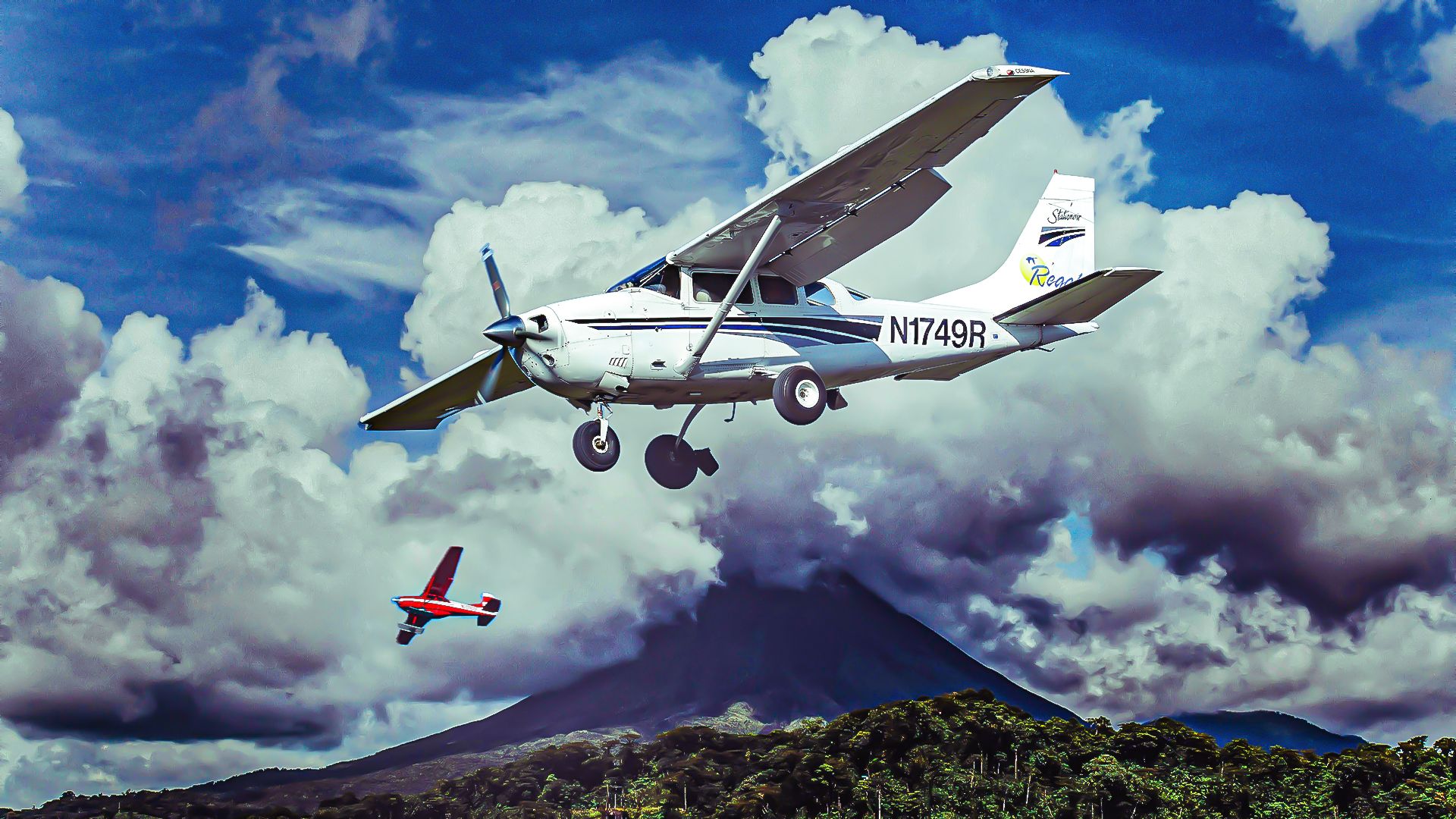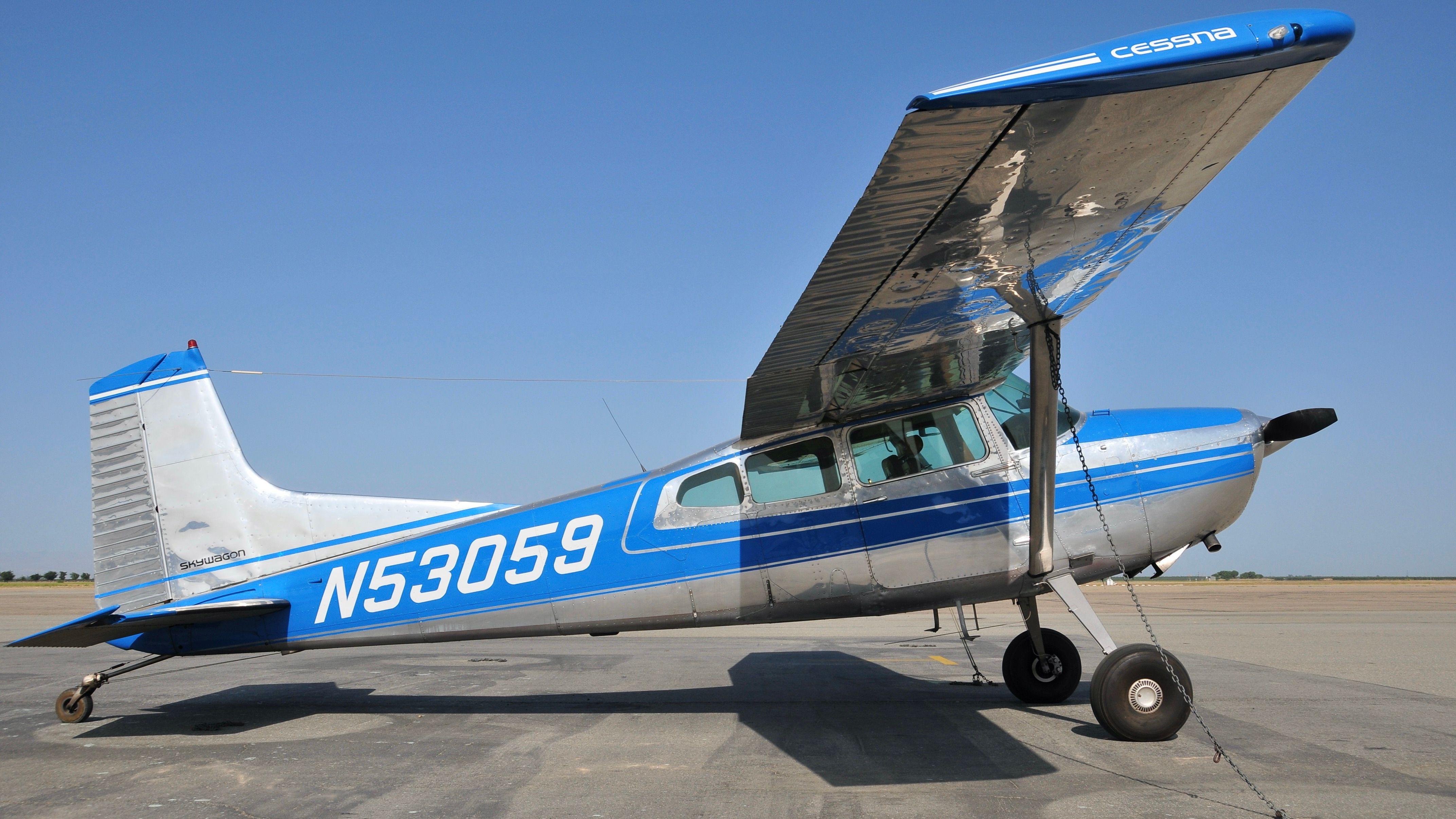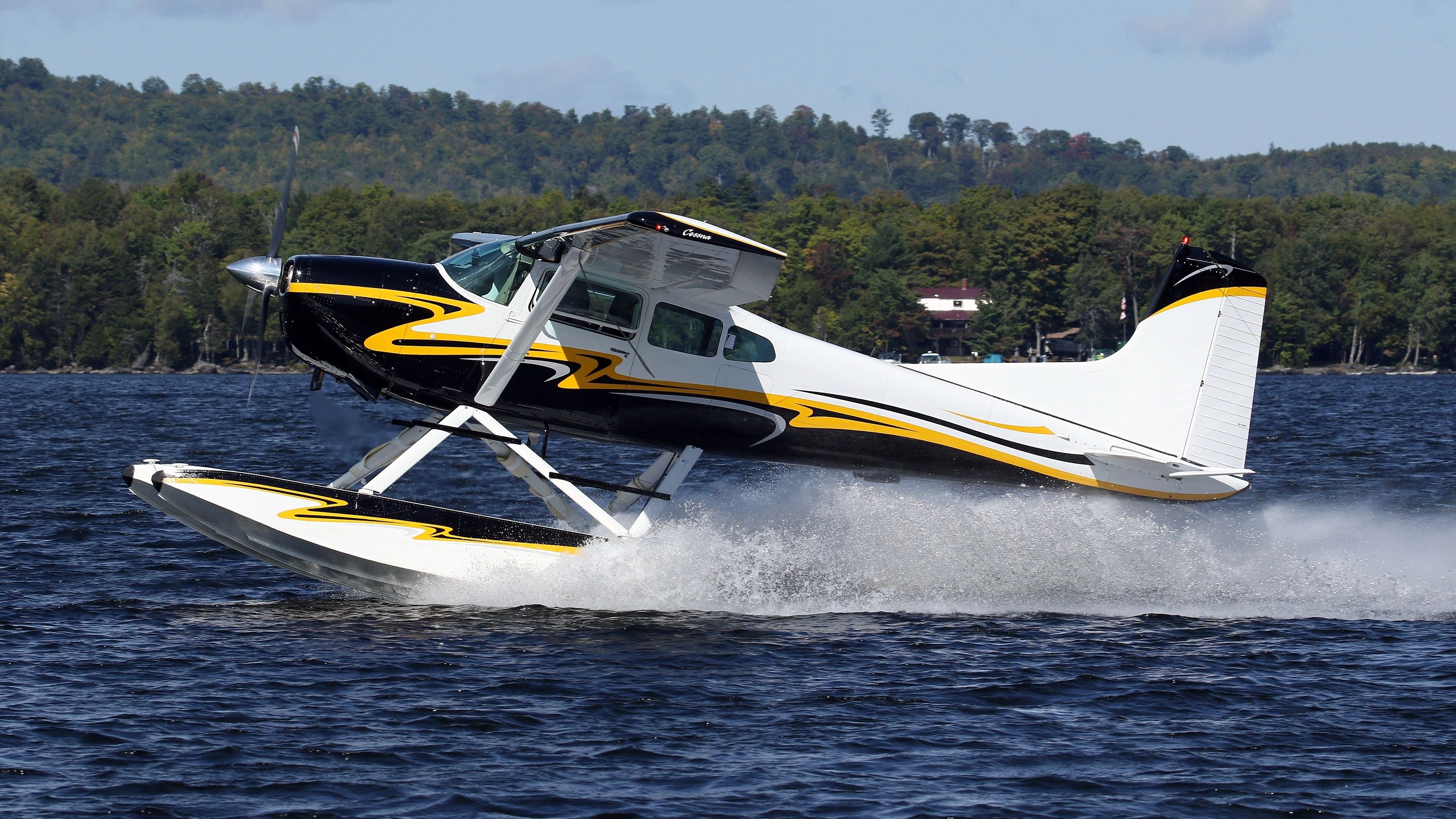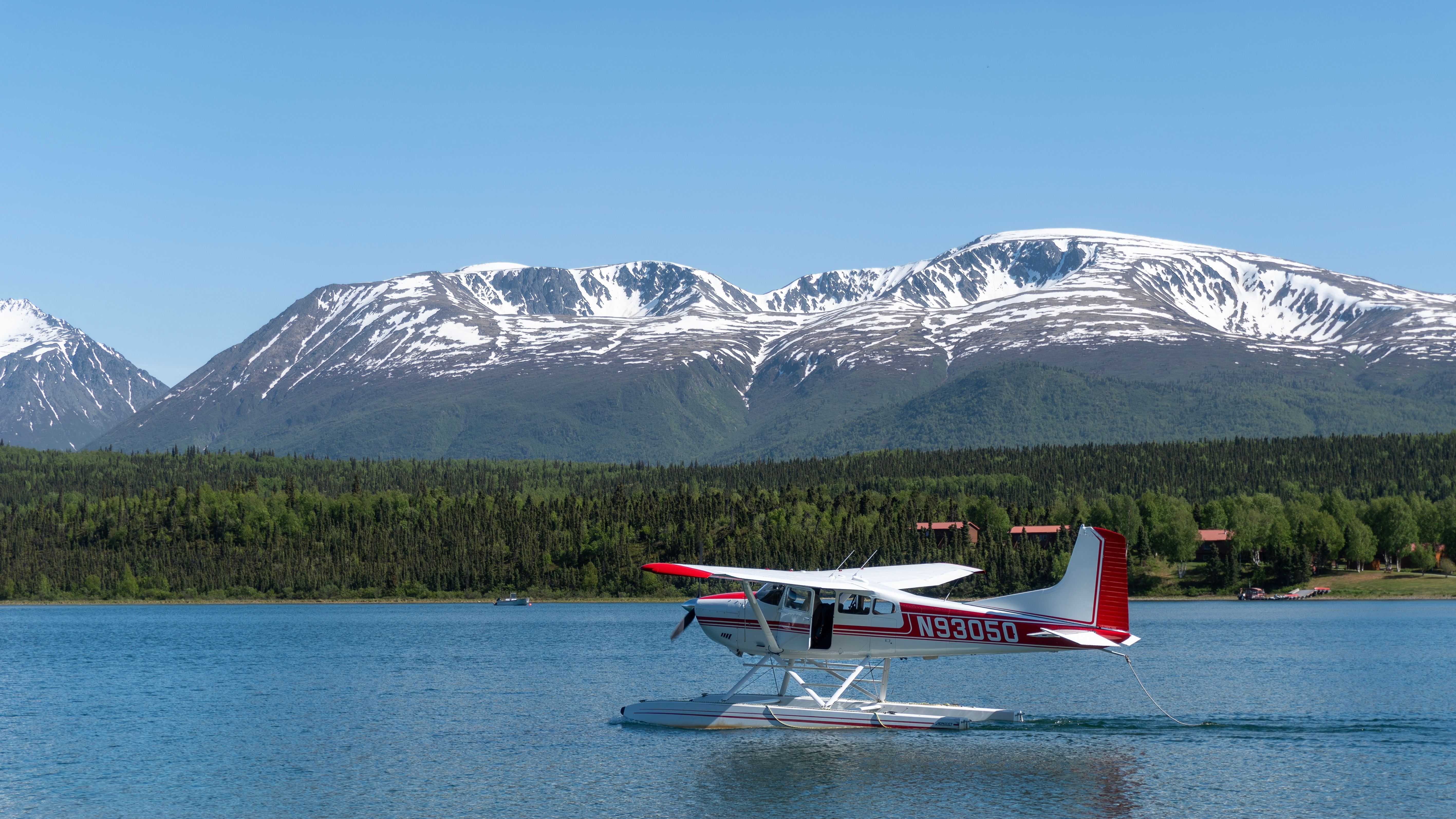Summary
- The Cessna 185 Skywagon was produced between 1961 and 1985 with over 4,400 built by Cessna, known for its practicality.
- The aircraft can be fitted with floats, skis, or amphibious floats, making it versatile for remote locations like Canada and Alaska.
- Variants of the Cessna 185 were released with improvements over the years, with the Skywagon being used in agriculture and general aviation as well as the military.
The Cessna 185 Skywagon is a single-engine aircraft used in general aviation. It is known as a ‘work-horse’ light utility aircraft suited to many environments whilst being easy to fly, low maintenance and very versatile. It was produced between 1961 and 1985 and over 4,400 of the popular aircraft were built by Cessna. Let’s take a look at the Skywagon in more detail.
A little background
The Cessna Skywagon first flew in July 1960 as a prototype, and the first aircraft rolled off the production line in 1961. It was developed from the Cessna 180 but built with a stronger fuselage. It had a larger vertical fin than the Cessna 180, and later, more powerful engines were added. The original aircraft had one 260-horsepower Continental IO-470-F engine and a two-blade propeller. It is a high-wing aircraft with non-retractable landing gear and a tail wheel.
Photo: Richard Thornton | Shutterstock
More about the aircraft
The aircraft could seat six, including the pilot, although mostly only seated four due to the preference for extra baggage space. It could be fitted with floats, amphibious floats or skis, so a very practical aircraft for use in remote areas for carriage of both passengers and cargo. The aircraft is used a lot in remote parts of Canada and Alaska, on lakes, in the snow, and on airstrips, providing vital services to the region.
In agricultural use
The Cessna 185 was also made in a variant suited to agriculture and crop dusting and was introduced in 1972. Known as the AgCarryall, the aircraft has a 151 gallon tank on its belly to hold chemicals. There are removable spray booms for the purpose of crop dusting. A cargo pod could also be added under the fuselage for extra space.
Photo: Kevin Porter | Shutterstock
Variants of the Cessna 185
There are seven variants of the Skywagon or Cessna 185 for civilian use. Each variant was developed and released with improvements. The original Skywagon was released in 1961 and considered a land aircraft; 238 were built. The 1962 model 185A had new wingtips and position lights. Two fuel pumps and a Vernier throttle were added, and 275 were built.
The 185B was released in 1963 and had an overhead light console, magnesium rudder pedals and a single fuel pump. 141 of the aircraft were built. The following year, the 185C featured a 12V alternator, dual brake linings and a tail wheel lock. 124 were built. The 185D followed with open-view control wheels and the instrument panel was redesigned and 119 were built.
Next came the 185E in 1966, but it was discontinued the following year. The A185E Skywagon was offered as an alternative with the more powerful 300-horsepower Continental IO-520-D engine. In 1967, a pointed propeller spinner was added, along with a ‘split bus’ electrical system and a new alternator. In 1968, an induction air system and baggage door were added. ARC avionics were added in 1969 as an optional feature. In 1970, conical camber wingtips were added.
During the 1970s, more developments were added, and the aircraft became the A185F Skywagon. These included a redesigned instrument panel, camber lift wings and nose-mounted lights. Although not classed as a variant, the Skywagon II included IFR avionics as standard. In 1980, a three-bladed propeller was added instead of the two-bladed one.
Photo: EWY Media | Shutterstock
Aircraft specifications:
(Data from Cessna for 1978 185 Skywagon II land plane)
General characteristics
- Crew: one
- Capacity: five passengers
- Length: 25 ft 9 in (7.85 m)
- Wingspan: 35 ft 10 in (10.92 m)
- Height: 7 ft 9 in (2.36 m)
- Wing area: 174 sq ft (16.2 m2)
- Empty weight: 1,748 lb (793 kg)
- Gross weight: 3,350 lb (1,520 kg)
- Powerplant: 1 × Continental IO-520-D, 300 hp (220 kW)
- Propellers: 2-bladed constant speed, 6 ft 10 in (2.08 m) diameter
Performance
- Maximum speed: 155 kn (178 mph, 287 km/h)
- Cruise speed: 145 kn (167 mph, 269 km/h)
- Stall speed: 49 kn (56 mph, 91 km/h)
- Range: 720 nmi (830 mi, 1,330 km)
- Service ceiling: 17,150 ft (5,230 m)
- Rate of climb: 1,010 ft/min (5.1 m/s)
- Wing loading: 19.3 lb/sq ft (94 kg/m2)
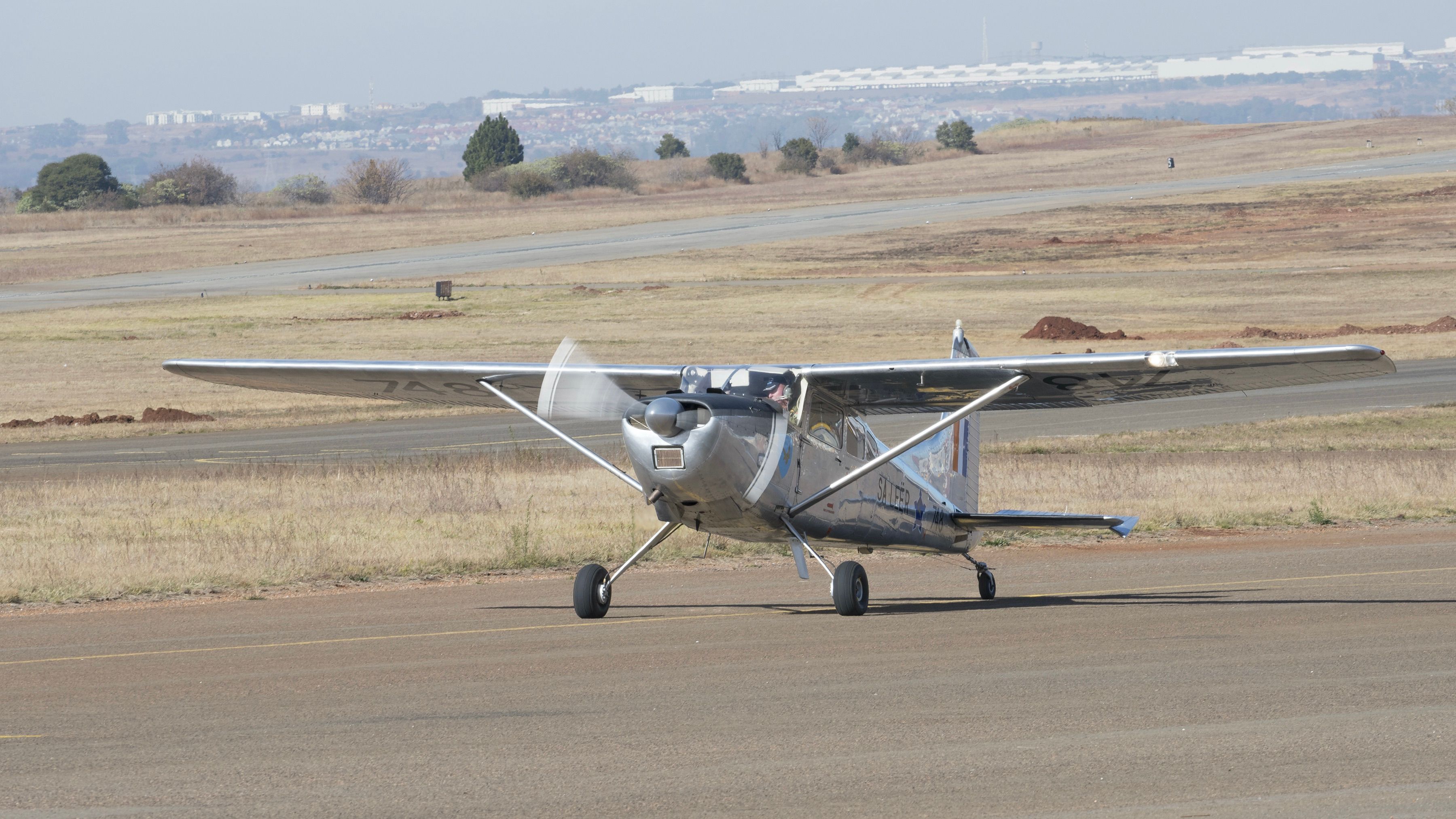 Specification for differing configurations:
Specification for differing configurations:
|
Landplane |
Floatplane |
Amphibian |
|
|---|---|---|---|
|
Length |
27 ft 0 in (8.23 m) |
27 ft 6 in (8.38 m) |
|
|
Height |
12 ft 2 in (3.71 m) |
12 ft 8 in (3.86 m) |
|
|
Empty weight |
1,745 lb (792 kg) |
1,910 lb (866 kg) |
2,165 lb (982 kg) |
|
MTOW |
3,320 lb (1,506 kg) |
3,265 lb (1,481 kg) on land 3,100 lb (1,406 kg) on water |
|
|
Max. speed |
136 knots (252 km/h) |
141 knots (261 km/h) |
135 knots (251 km/h) |
|
Range |
516 nm (957 km) |
503 nm (933 km) |
482 nm (893 km) |
|
Ceiling |
16,400 ft (5,000 m) |
15,300 ft (4,700 m) |
|
|
Rate of climb |
960 ft/min (293 m/min) |
970 ft/min (296 m/min) |
The Cessna Skywagon in use today
As previously mentioned, the Skywagon is used in Canada and Alaska to travel to remote regions, providing an essential passenger and freight service. It is also popular for private use and charter. Two military versions of the aircraft are currently used worldwide. Cessna finally ceased production of the Skywagon in 1985, with over 4,4000 models built.

